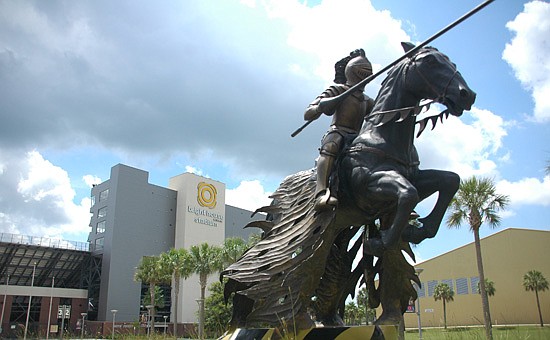- April 19, 2024
-
-
Loading

Loading

Amid national upward trends of both tuition costs and student debts in colleges across the U.S., some colleges in Central Florida are fighting to keep student costs down. But they may be sacrificing employees to do it.
As of 2011, Florida ranks 45th in average tuition costs for public universities at $5,626 per year, according to a survey done by College Board.
But these numbers haven’t stopped Florida from trying to keep those costs from rising, at least this year. After allowing an 8 percent jump in 2011 and 5 percent in 2012, Gov. Rick Scott vetoed a 3 percent tuition increase for Florida colleges last May.
“Higher education in Florida should be affordable so it is accessible to as many Florida families as possible,” Gov. Rick Scott wrote in a news release. “The increase in tuition and fees have demanded an increasing percentage of Florida’s household income, and saddled many Florida graduates with tens of thousands of dollars in debt.”
That statement comes at odds with Scott’s former stance on tuition increases. In 2012, after allowing another increase in tuition, he said that colleges should be allowed to decide how to “weigh the needs of their institutions against the burden of increased student costs.”
The recent change in his stance has been bolstered by moves by Central Florida colleges.
Last month, Seminole State College’s District Board of Trustees voted to keep current tuition costs the same for the second consecutive year, holding their ground at $79.78 per college credit hour for most students.
“I am not in favor of a tuition increase,” President E. Ann McGee said. “Student loan debt is troubling both nationally and also here at Seminole State.”
Rollins College has slowly increased its tuition over the past 10 years, but has reduced how rapidly they’ve increased it.
The college increased its tuition by 5.7 percent in the 2008-2009 academic year, but has since trimmed it down to 3.9 percent during the 2012-2013 academic year.
“Back in 2008-2009, we started hearing a lot of grumbling in Congress and elsewhere about prices, and I think the industry as a whole tried to put the brakes on increases in tuition,” said Bill Short, assistant vice president of finance at Rollins College.
“Rollins is actively trying to keep our tuition increases as low as we possibly can every year.”
Though tuition at Rollins College is going up, so is the financial aid available to students, Short said. The university raised their financial aid from 41 percent to 43 percent prior to the 2012 -2013 academic year.
The financial aid at Rollins has left their average student paying approximately 60 percent of their tuition.
“We’re actually giving away more tuition than we actually increase by,” Short said.
But those low tuition costs could come back to haunt employees. At Seminole State, staff cuts are projected to be $100,000 each month, even as the college rapidly expands its student body. In just the past four years that school has increased its student body by more than 50 percent to an estimated 32,000. McGee, who grabbed the spotlight in 2009 for “double-dipping” by retiring for a month from her $300,000 per year post to begin collecting state retirement benefits before returning to work, is not expected to be on that chopping block among the school’s staff of 735.
And despite the low tuition costs, students in Florida have been graduating with a disproportionately high debt. Though Florida ranks well in average tuition costs in the country, the sunshine state is ranked 33rd in average student debt for graduating college students at $23,054, according to a study done by The Project on Student Debt in 2011.
“A lot of graduates are coming out of school and they may have borrowed money to finance their educations and so they have a significant student loan debt,” said UCF economist Sean Snaith.
“The weak labor market and the fact that some of the graduates are graduating with some student loan debt that they have to pay back has really highlighted the issue of student loan debt.”
And college students across the nation could be in for higher payments as of Monday, July 1, when interest rates on Stafford student loans doubled from 3.4 to 6.8 percent with the U.S. Senate unable to reach an agreement to avoid the hike before this week’s deadline. But lawmakers from both parties have said they will work to lower the rate again before students begin taking loans for the fall.
Snaith pointed out that students graduating from Florida colleges are still getting a bargain and that they tend to walk away with smaller debts compared to students across the country.
“If you look at what’s the cost of a four-year education in Florida and compare it to the cost of the same degree in other states, in most instances Florida’s costs are going to be lower,” Snaith said.